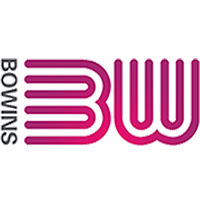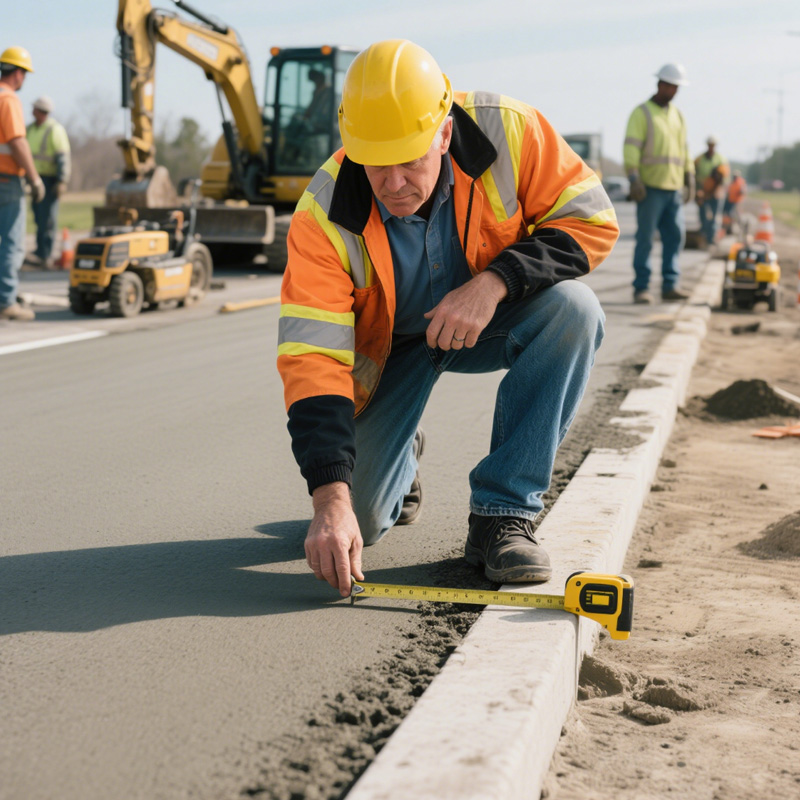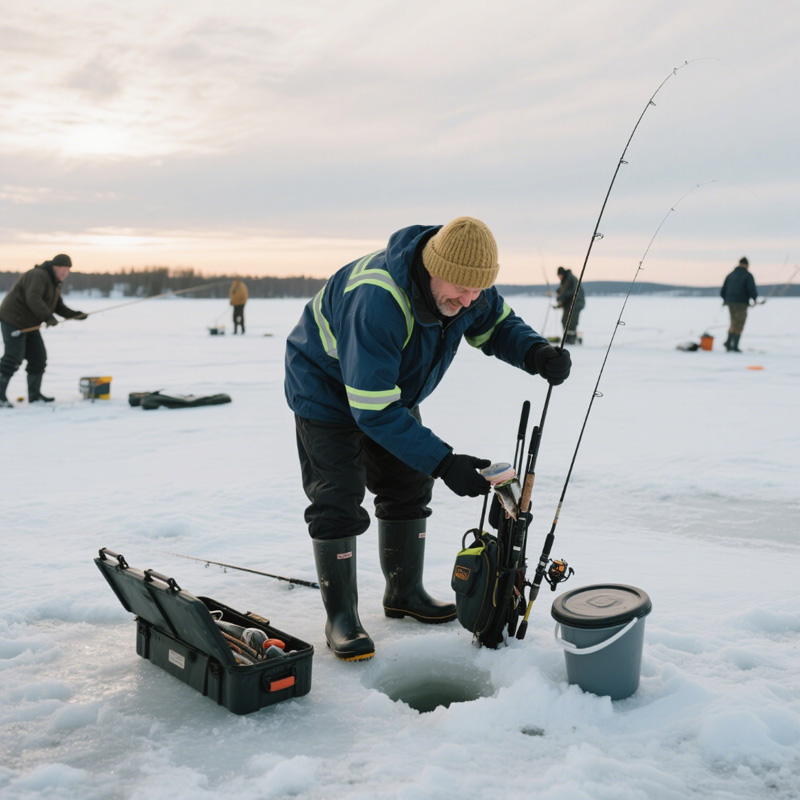In recent years, deer hunting has become increasingly popular, and people have become more demanding when it comes to deer hunting equipment. It’s important to note that deer often frequent wooded areas, and hunters need to scout in advance, utilizing various covers such as dense trees and foliage. They need to move slowly, silently, and discreetly, either tracking, ambushing, or stalking their prey. As a result, a variety of deer hunting clothing has emerged, among which the deer hunting heated vest proves to be particularly practical. This is especially true for hunters who track deer herds, as these heated vests offer lightweight, secure options that can even provide warmth through heating elements. However, like any specialized equipment, deer hunting vests have their advantages as well as potential drawbacks, such as high prices, insufficient heat output, and challenges in cleaning. In this article, we will delve into these drawbacks of heated vest to provide hunters with a comprehensive understanding of the potential issues they may encounter, enabling them to make informed decisions when weighing the pros and cons of their choices.
1. What is a deer hunting heated vest?
A deer hunting heated vest is a multi-layered sleeveless vest that is designed for cold weather and outdoor deer hunting activities. It is a functional garment powered by batteries and equipped with heating elements. The heating elements are embedded in the lining of the vest to provide consistent warmth. These vests are typically designed to be lightweight, flexible, and comfortable to accommodate the movements and insulation needs during deer hunting.
2. What are the advantages of a deer hunting heated vest?
2.1 Fashionable and flexible design
The deer hunting heated vests, carefully designed by the BOWINS apparel team, feature soft linings and warm fabrics that provide a comfortable and snug fit. Compared to heated hunting jackets, they are lighter, more flexible, and easier to put on and take off. The sleeveless design allows for easy pairing with other garments, such as wearing it under a regular jacket or as an outer layer over a shirt or hoodie, adding to its versatility and practicality.
2.2 Windproof, Waterproof, and Breathable Materials
The deer hunting heated vests developed by the BOWINS apparel team are typically made with multi-layered composite softshell fabrics that are coated with a thin film layer. This ensures the clothing’s windproof, waterproof, and breathable properties while maintaining warmth. The multi-layered composite softshell fabrics generally include a durable, windproof, and waterproof outer layer, such as nylon or polyester; a warm and breathable middle layer, such as lightweight fleece or synthetic insulation; and a breathable and comfortable inner layer, such as mesh fabric.
2.3 Adjustable Concentrated Heat
The deer hunting heated vests manufactured by the BOWINS apparel team are equipped with an integrated modern technology called the Graphene heating system. Four heating zones are strategically distributed in the pockets, collar, and upper back area, and the heating elements are powered by dedicated wires connected to 5V or 7.2V lithium batteries. Through the heat provided by these core areas, the heated vest can effectively maintain body warmth. Compared to regular down vests, it offers more consistent and long-lasting warmth. It also features functions such as timer settings and multi-level temperature control, allowing users to adjust the temperature according to their needs, providing a more personalized warming experience.
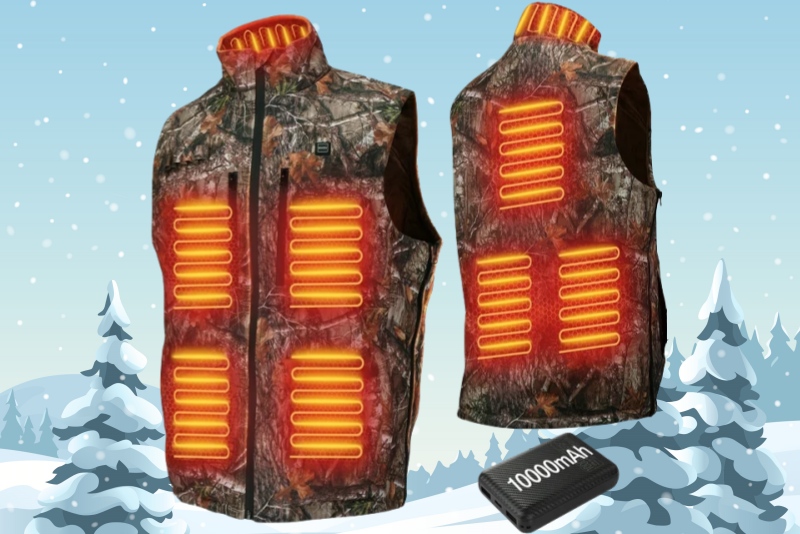
3. What are the disadvantagesof a deer hunting heated vest?
While heated vests offer numerous advantages, there are also a few potential disadvantages to consider:
3.1 Higher Cost
For consumers, price can be a primary consideration. However, deer hunting heated vests require advanced technological components such as built-in heating devices, power systems, and control circuits, which contribute to relatively higher production costs. Additionally, the use of high-quality fabrics and special coatings to ensure windproof, waterproof, and breathable performance increases the material costs. The complex manufacturing processes and processing techniques involved in production also contribute to higher costs, resulting in higher prices for the final product. This can be a significant disadvantage for budget-conscious consumers.
3.2 Limited coverage
Deer hunting heated vests primarily focus on warming the upper body, including the chest and back. However,they may not provide heat to the extremities like the arms, hands, and legs.If you require warmth in these areas, you would need to use additional heated accessories like gloves or pants.Bowins as a hunting wear manufacturer which have design and technology center,can design whole set heated wear for our customers, including heated jacket,pants,bib,vest,gloves,neck gaiter,scarf,socks,cushion,etc.
3.3 Limited Power Supply
Deer hunting heated vests require a power source or battery to achieve heating effects. If the battery runs out or an external power source is unavailable, the heating function will be restricted. This means that consumers need to regularly recharge the battery or carry spare batteries to ensure a reliable power source. This adds extra weight for consumers. Moreover, the limited lifespan of batteries also limits the usage time of the heated vest. High-power heating modes may deplete the battery faster, resulting in shortened usage time for the heated vest and potentially affecting the deer hunting activity. Therefore, this can be another notable disadvantage.
However, the deer hunting heated vests produced by the BOWINS apparel team utilize efficient carbon fiber heating elements and high-performance semi-solid lithium batteries sourced from a high-quality supply chain. This effectively reduces the weight and size of the batteries while significantly improving the heating endurance.
3.4 Bulkiness and weight
Although deer hunting heated vests are designed to be lightweight,the inclusion of heating elements and batteries can add some bulk and weight compared to regular vests or base layers. This additional weight may be noticeable, particularly if you engage in activities that require agility or freedom of movement.
3.5 Complex Cleaning and Maintenance
Deer hunting heated vests with advanced features may require special cleaning and maintenance, including following specific cleaning guidelines and regularly checking the battery and heating device’s operational status. Due to the integrated components in the heating vest, it cannot be treated as regular clothing and generally requires handwashing or special cleaning procedures to protect the electronic components. This complexity adds workload for consumers and can be a factor inhibiting the purchase of deer hunting heated vests.
However, the deer hunting heated vests produced by the BOWINS apparel team are made with high-quality materials and come with specific washing and maintenance instructions. Consumers can confidently handwash or machine wash the vests following the provided guidelines. Of course, to ensure consumer safety, it is essential to remove or disconnect the power source or battery before cleaning the heated vest.
3.6 Limited Weather Resistance
Typically, deer hunting heated vests are designed to be waterproof or weather-resistant, but not all heated vests are completely waterproof or suitable for extreme weather conditions. Some heated vests may not keep dry in heavy rain or provide sufficient insulation in blizzards. Additionally, compared to regular clothing, heated vests may not be suitable for extremely humid environments. The built-in electrical components are sensitive to moisture and carry the risk of damage. Therefore, consumers need to exercise caution and avoid prolonged exposure to excessively humid environments. This can be another significant drawback of heated vests.
4. Conclusion
In conclusion, deer hunting heated vests have both significant disadvantages and considerable advantages. Despite their high cost, complex maintenance, reliance on batteries, and sensitivity to the environment, these disadvantages need to be weighed against their benefits. They remain a valuable choice for outdoor activities, cold environments, or specific circumstances where extra warmth is required. By understanding these drawbacks and carefully considering one’s needs, consumers can make informed choices, and the heated vests can serve as an asset to their hunting activities.
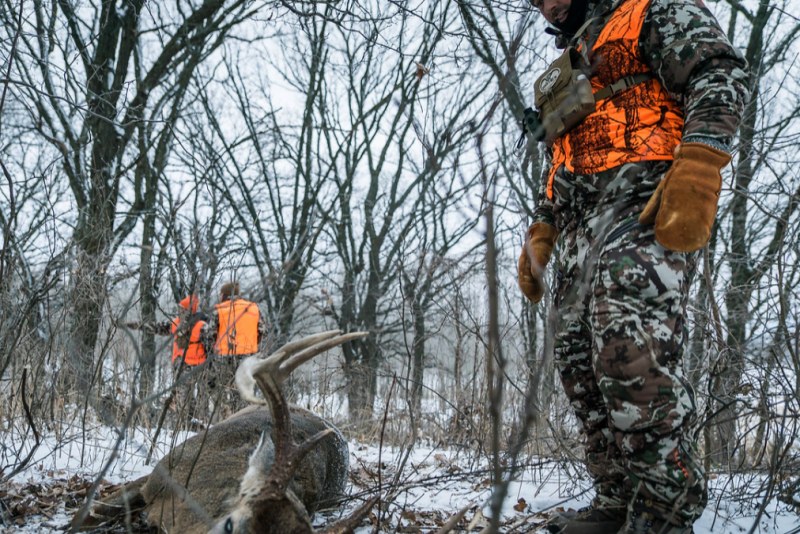
BOWINS Garment has accumulated over 17 years of experience and expertise in the heated apparel industry, providing OEM/ODM services to globally renowned heated apparel brands. With a commitment to quality and innovation, BOWINS Garment strives to deliver reliable and high-performance heated clothing solutions for users.
If you have any questions or requirements, please feel free to contact us. Our team is ready to serve your needs at any time.
